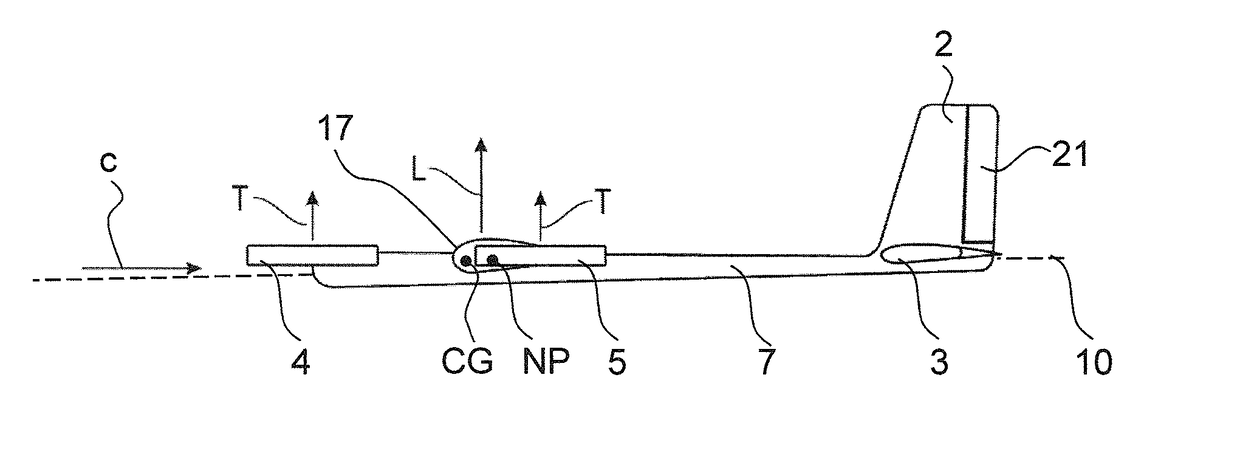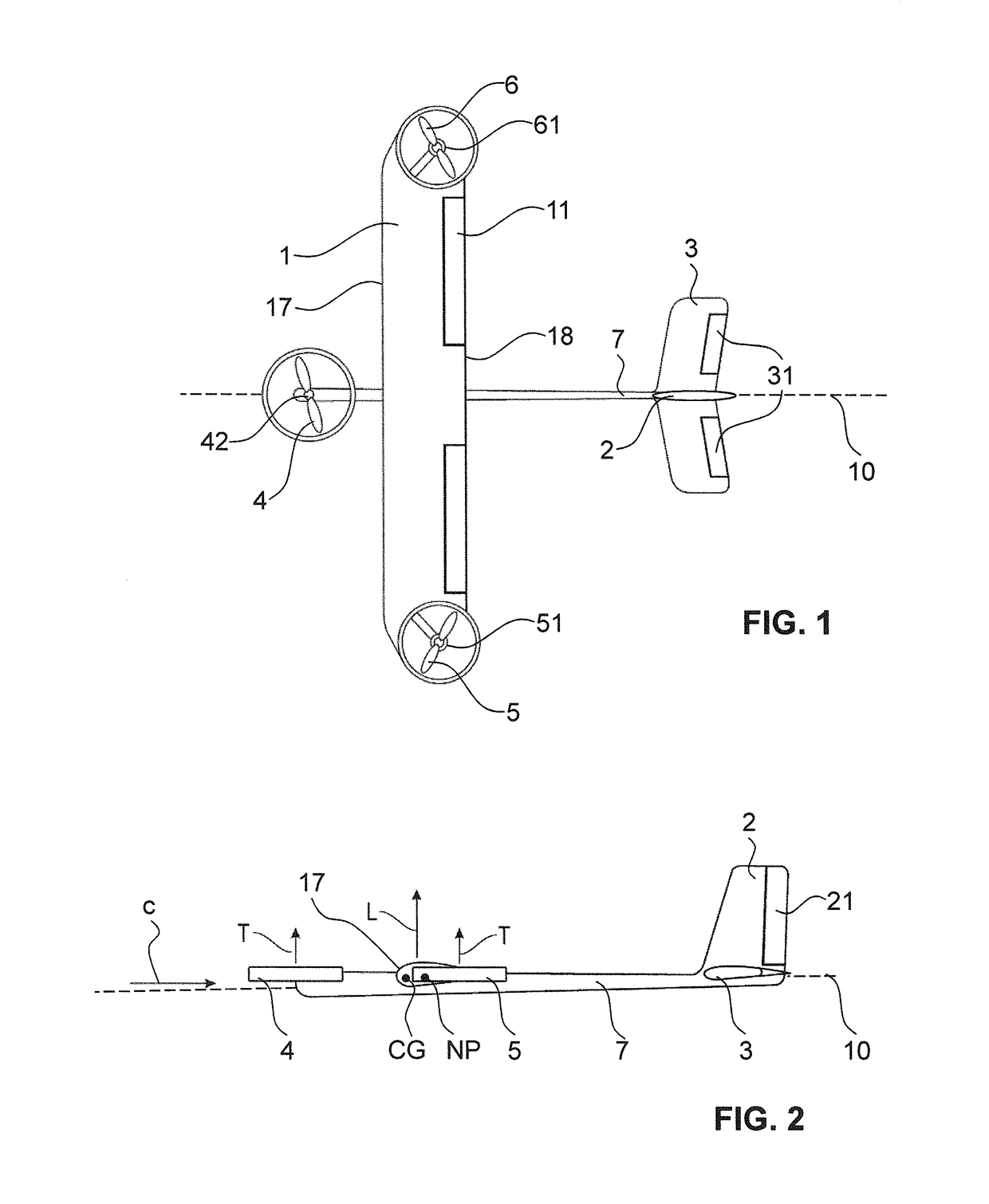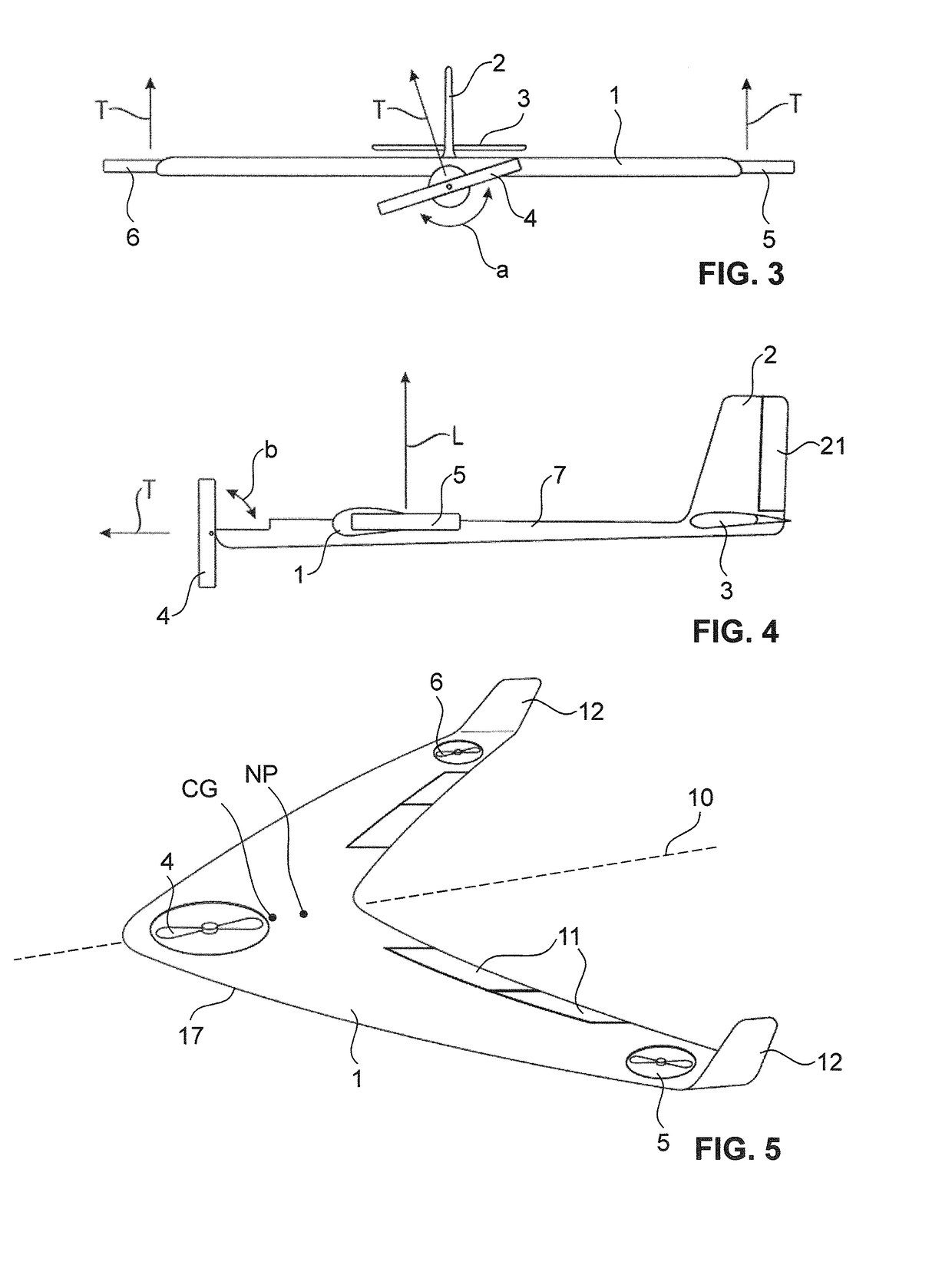Flying apparatus
a technology of flying apparatus and propeller, which is applied in the direction of machines/engines, vertical landing/take-off aircraft, transportation and packaging, etc., can solve the problems of long runways, unstable flight, and the most difficult maneuvers of airplanes
- Summary
- Abstract
- Description
- Claims
- Application Information
AI Technical Summary
Benefits of technology
Problems solved by technology
Method used
Image
Examples
Embodiment Construction
[0053]FIGS. 1 to 8 show several embodiments of flying apparatuses according to the invention. FIGS. 9a to 9c show, how a flying apparatus according to the invention can be used to harness wind energy in a system for generating electrical energy. FIG. 10 shows a further application of the flying apparatus according to the invention as a stationary elevated platform. To each of the embodiments as shown in FIGS. 1 to 8 one or several tethers can be attached, in order to use the respective flying apparatus for the generation of electrical energy or as a stationary elevated platform. Electrical energy and or communication signals can be transmitted from the ground to the flying apparatus or vice versa by means of the tether(s), which in this case is / are electrically conductive and / or comprise communication means, such as a fibre optical cable.
[0054]Elements having an identical or similar function are indicated by the same reference numerals throughout all embodiments as shown in FIGS. 1 ...
PUM
 Login to View More
Login to View More Abstract
Description
Claims
Application Information
 Login to View More
Login to View More - R&D
- Intellectual Property
- Life Sciences
- Materials
- Tech Scout
- Unparalleled Data Quality
- Higher Quality Content
- 60% Fewer Hallucinations
Browse by: Latest US Patents, China's latest patents, Technical Efficacy Thesaurus, Application Domain, Technology Topic, Popular Technical Reports.
© 2025 PatSnap. All rights reserved.Legal|Privacy policy|Modern Slavery Act Transparency Statement|Sitemap|About US| Contact US: help@patsnap.com



